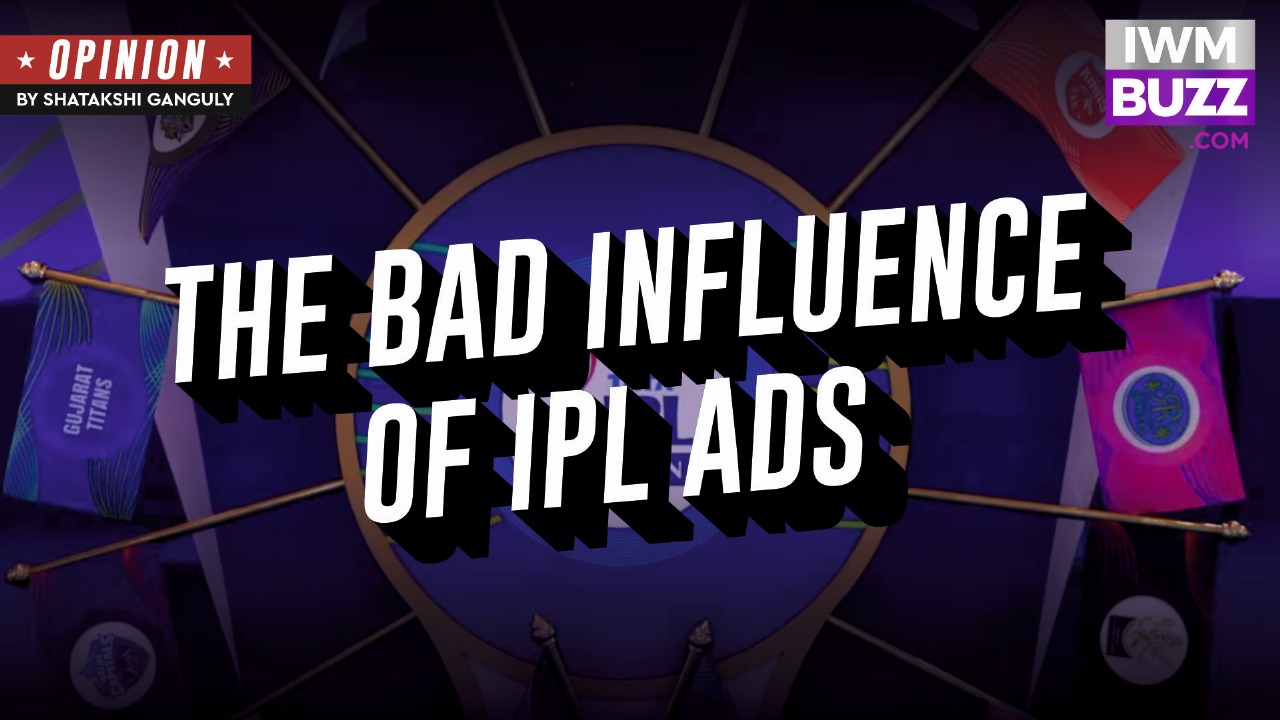Young Muskaan and Rudra watch IPL match excitedly between MI and RCB; One supports King Kohli while other is a Pandya fan. Wearing their favourite colors, they cheer, hoot and celebrate like millions of Indian cricket lovers. Cricket in India is indeed religion, and of course, a game loved to the moon and back.
“Daddy, I want one of those,” says Muskaan as Bhaijaan of Bollywood pops open a gutka packet.
“Is it chocolate?” persists Muskaan as Daddy dear huffs and puffs wondering what to answer.
“Daddy, why are we not super rich? It is simple, you can win 3 crore everyday,” insists Rudra, in pride of his new found wisdom from a betting ad.
Daddy dear is in loss of words, to watch or not to watch: the age old Shakespearean dilemma hits him hard.
“Zindagi jeene ke do hi tareeke hote hain – ek jo ho raha hai use hone do, ya zimmedari uthao usse badalne ki!,” Remember these lines from Rang De Basanti? Apparently, the IPL chose the first one. Let ads happen. Let kids be influenced. Let culture be collateral.
What outstanding ‘sanskari’ grooming we are giving to our kids, right? Kids are now getting groomed for ‘responsible gambling’ and receiving a free drive course for ‘How to eat gutka-101.’
As mentioned, sports fanatics call ‘cricket’ their religion. If it is, then I shall say, gutka, alcohol and gambling must be the prasad (disclaimer: hope you understand the painful humour behind ‘prasad,’ and not efficiently make it all about religion), during the IPL season.
Every match break pops a superstar tossing a shiny pan masala tin in slow motion. And have you really watched those ads closely? VFX ke naam pe ‘dhoka’ milega aapko, bas! Half the time, it’s just glittery particle effects raining down like diamonds into the actor’s mouth, and you see no actual pan masala in sight. But the impact on the kids? That’s real!
And then, when you think that it ends with the gutka saga, the next Antilia level sanskari entertainment slides in Gambling—no, but ‘responsibly’ of course!
Gambling apps promise “responsible fun” (because obviously, nothing is more responsible than losing your pocket money before the second innings).
Well, yes, arguments might come that they are giving ‘warning disclaimers’ when streamed, yes, those ‘disclaimers’ that blink faster than your internet connection during a rain delay.
So, what exactly is up with these ads? –Money over morality.
It is a match made in marketing heaven. They do not care to glance at the residing and lingering harmful impacts. Even if they are borderline ‘illegal’ for underage viewers, the equation here is ‘if it pays, it plays.’ The IPL is no longer about cricket. It’s all about these super shiny ads getting the front-row seats. After all, a little public health crisis is okay when there’s a billion-dollar TRP at stake; isn’t it?
[An unasked help, that I fetched from a Reddit user; if you are willing to skip these ads, switch to the MultiCam option on JioCinema—no ads, tested on TV, mobile, and PC. Works 100%!]
And do you know where the irony goes?
Just when Piyush Goyal, Union Minister of Commerce & Industry, urges Indian startups to stop building food delivery apps, betting and fantasy sports and instead focus on deep tech like AI, semiconductors, and electric mobility … and then we see the biggest sporting spectacle of the country is cooked up with serving gutka and gambling glamour.
Of course, Piyush Goyal’s message was evident on his part: it is to build ‘substance’, not ‘shortcuts.’
But how do we expect our next-gen to innovate in robotics and quantum tech when their screen time is hijacked by ads teaching them that they can earn ‘success’ by having a ‘pan masala.’ And shame on Bollywood biggies for endorsing such ads. Request them to serve a healthy dose of gutka to their children in breakfast everyday. Will they?
So, here’s an honest, no-sarcasm-left question for the authorities and policymakers: at what point do we stop turning a blind eye?
Should we really be normalising pan masala glamour and gambling dreams during the country’s biggest sporting festival, knowing well that millions of kids are glued to the screen? While we talk about building a tech-savvy, innovation-driven India, how do we justify selling addictive distractions during prime-time cricket tournaments? Isn’t it time that we ask, not just ‘what sells,’ but ‘what shapes?’
(With Inputs From Siddhartha Laik)

